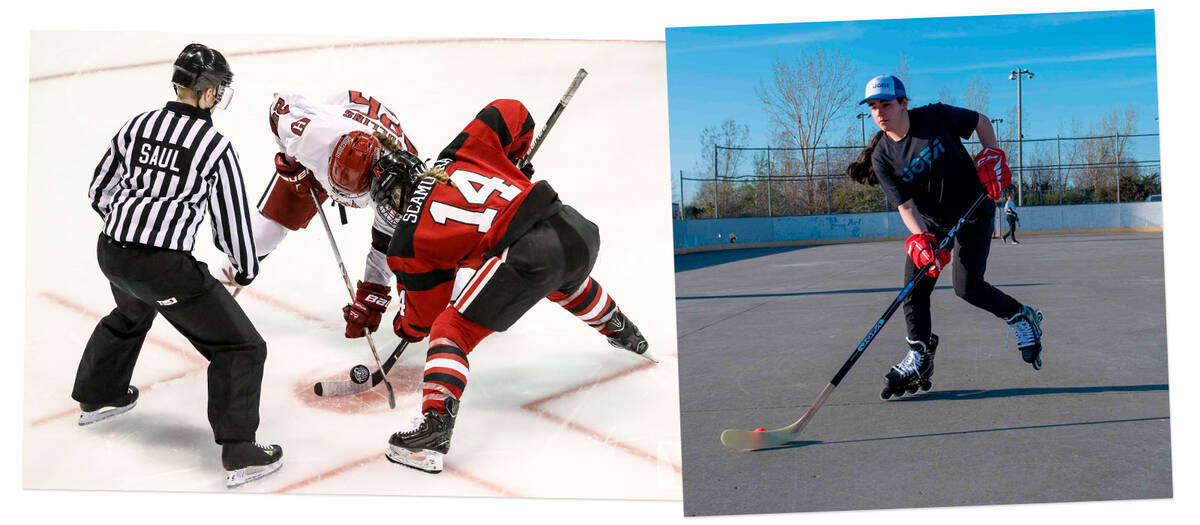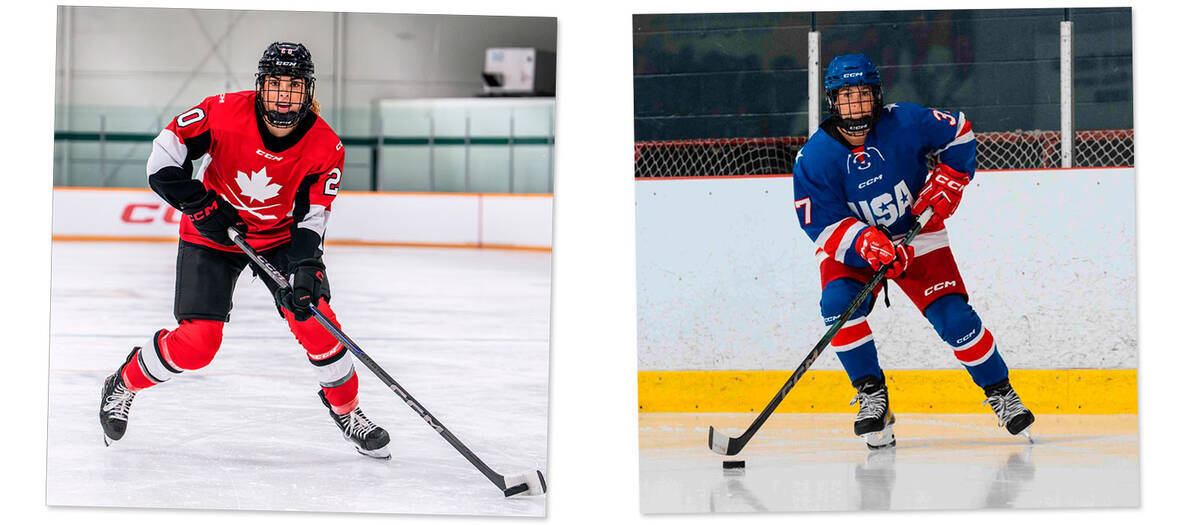Guide to Buying Hockey Sticks - Find the Perfect Stick for Your Game

Selecting a fresh hockey stick involves matching it to your skill level, height, and playing style. The dimensions, flex, and surface you'll play on are essential factors to contemplate.
With a multitude of options on the market, identifying the optimal hockey stick for your requirements can appear daunting. Whether you're engaged in roller hockey or ice hockey, possessing the appropriate stick is vital for your performance. Here's a compilation of primary considerations to assist you in choosing the ideal hockey stick based on your playing style, skill level, and playing conditions.
- Surface Type: Decide on the stick contingent on your playing surface—ice, roller, or street.
- Material: Opt for a stick crafted from lightweight yet robust material.
- Length: Establish the stick length according to your height and playing technique.
- Flex: Elect a flex suitable for your strength and preferred shooting style.
- Handedness: Determine left or right based on your grip style.
For more detailed knowledge about these features, proceed with reading!
Overview
Varieties of Hockey Sticks: Ice, Roller, and Street

The initial consideration is whether you'll utilise the stick for ice hockey, roller hockey, or street hockey. The stick selection heavily relies on the surface you play on, as well as your playing approach.
- Hockey sticks for ice hockey: Tailored for use on ice
- Hockey sticks for roller hockey: Tailored for roller hockey surfaces like smooth tarmac or sport court tiles.
- Hockey sticks for street hockey: Designed for rugged outdoor surfaces such as tarmac, street hockey sticks are generally constructed from materials durable enough to withstand wear.
- Multi-purpose hockey sticks: Many sticks are excellent for various purposes, so if you engage in both street and indoor hockey, a single versatile stick might suffice.
When perusing a product description for a hockey stick, ensure it's intended for a particular type of hockey or surface.
Can You Utilise Ice hockey Sticks for Roller Hockey?
If you possess a stick designed specifically for ice hockey, it's not advised to use it for roller hockey as rougher surfaces will rapidly wear the hockey stick blade. It's strongly recommended to use the stick as intended by its manufacturer to maintain its usability as long as possible.
What Are Hockey Sticks Made From?

Hockey sticks are manufactured from materials such as carbon fibre, fibreglass, Kevlar, and wood—the latter being the original material used. Nowadays, sticks made from composite materials, frequently combining fibreglass and carbon fibre, are common.
The blade of a hockey stick isn't composed of the exact same material as the shaft. This differentiation is due to the shaft needing to be both durable and lightweight, while the blade material must possess the strength to endure intense impacts from pucks and balls.
Hockey stick shafts necessitate a high strength-to-weight ratio and must exhibit flexibility to bend without fracturing during intense matches. Various composite materials are optimised for such properties, although these traits are also seen in certain hardwoods.
Hockey stick blades must endure severe impacts without adding undue weight for the player. Composition options include carbon fibre, fibreglass, wood, or plastic. The material and form of the blade are critical for controlling the puck and shooting with accuracy.
Composite vs. Wood Hockey Sticks
- Wood hockey sticks: Traditional and robust, wood sticks often have more weight but deliver a classic feel. They're frequently utilised in street or roller hockey due to their durability.
- Composite hockey sticks: Constructed from materials like carbon fibre, Kevlar, or fibreglass, composite sticks are lightweight and flexible. Typically used in ice hockey, they also excel in roller hockey if a high-performance stick is desired. Although composite sticks are generally pricier, they offer superior energy transfer for shots and enhanced control.
When evaluating our roller and ice hockey stick collections, you can filter selections by shaft and blade material.
Selecting the Appropriate Hockey stick Length for You

Choosing the correct hockey stick length is fundamental to maximising your control and shot power. Your hockey stick length should be chosen based on numerous factors, including your height, skill level, playing style, and personal preferences.
Short Vs. Long Hockey stick
A shorter hockey stick facilitates control and agility, whereas a longer stick enables broader coverage. Players with offensive roles commonly prefer shorter sticks, while defensive players tend towards longer ones.
Arriving at the Right Hockey stick Length

Position your arm alongside your body and, while wearing your skates, grasp the end of the stick. Bend your arm slightly, maintaining proximity to your body. If the blade's toe tips slightly upwards, the stick length is appropriate.
Alternatively, stand with or without skates, holding the stick vertically towards your chin.
- With skates on: The stick's end should not exceed your chin.
- Without skates on: The stick's end should not surpass the tip of your nose.
Many players opt for slightly longer sticks to trim them to their desired length. This is a useful tactic if you're knowledgeable, but note that cutting the stick will void any warranty.
You can navigate our collections of roller and ice hockey sticks by length, providing you with the ability to view sticks available in your preferred length. For further clarity, consult our hockey stick size guide.
- Explore our hockey stick size guide
- Explore our selection of ice hockey sticks
- Explore our selection of roller hockey sticks
Understanding Hockey stick Flex
Flex pertains to the degree a hockey stick bends under force, such as when shooting. A higher flex number indicates a stiffer stick. Selecting the correct flex depends on your strength and desired shooting style.
- Lower flex: Facilitates more refined and accurate shots. Typically recommended for less experienced or younger players due to its ease of use.
- Higher flex: Capable of delivering powerful shots with increased force. Generally favoured by advanced hockey players.
Why Does the Hockey stick Blade Curve Matter?

The blade curve significantly influences how you manage the puck or ball—whether shooting, passing, or dribbling. It's essential to consider the curve. Experimenting with various blade curves can help determine what aligns naturally with your playing style.
By establishing a 'pocket' for the ball or puck, the blade curve improves control and facilitates consistent, powerful shots.
Deciding Between a Left-Handed or Right-Handed Hockey stick

The choice of a left-handed or right-handed hockey stick hinges on the hand you employ to guide the stick. If your right hand is on top, opt for a left-handed stick (and vice versa). The side from which you shoot is irrelevant to being naturally left- or right-handed—it's purely about comfort.
If unsure, hold a hockey stick with both hands, as though preparing to shoot. Opt for a...
- Left-handed hockey stick: If the puck is on your left side with the right hand atop and the left hand near the blade.
- Right-handed hockey stick: If the puck is on your right side with the left hand atop and the right hand near the blade.
In the following video, Nicklas demonstrates how to establish whether you're a left- or right-handed hockey player.
Remember to explore our complete roller and ice hockey selections. We offer everything needed for hockey:
